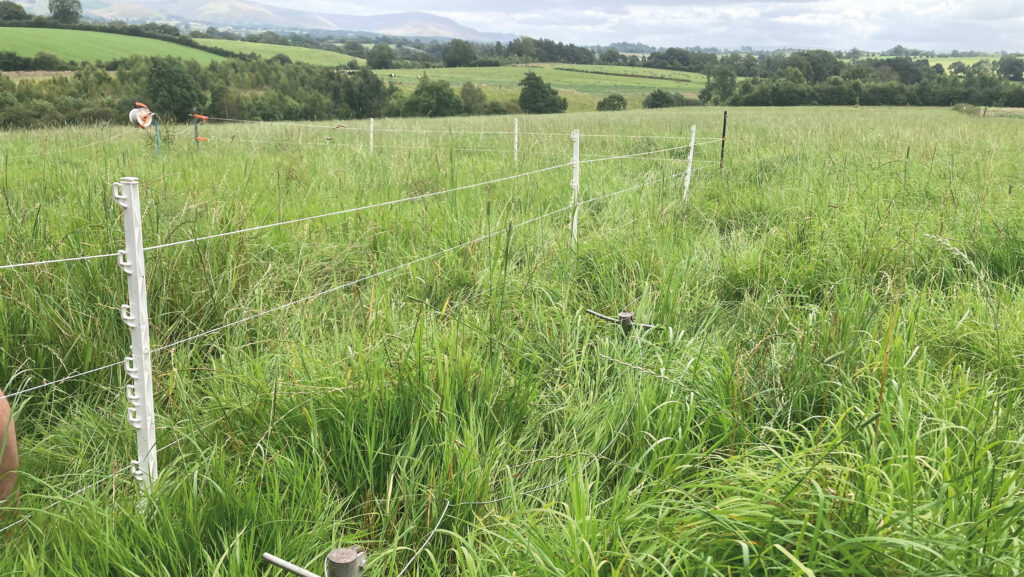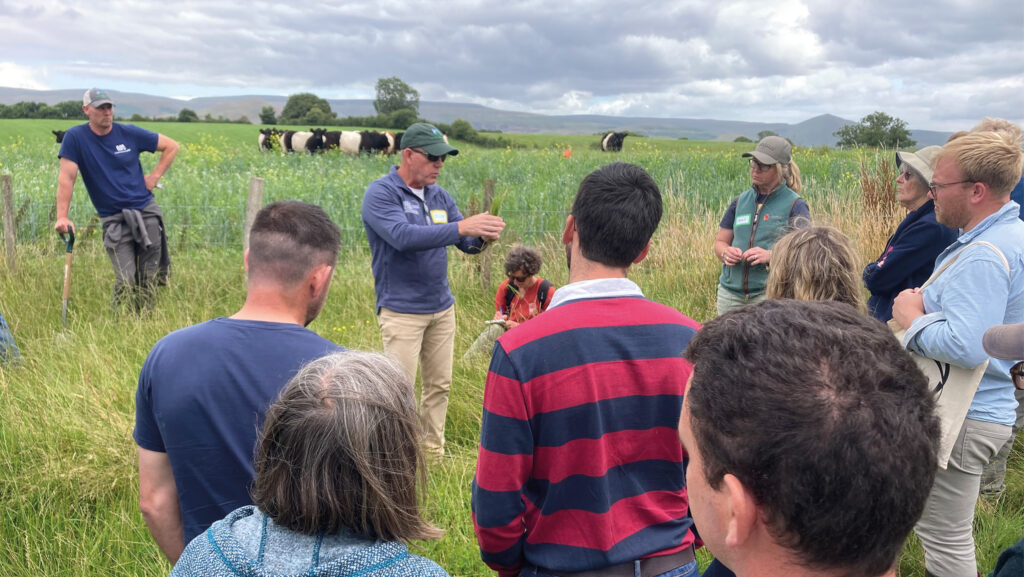Why rest and recovery are essential for pasture after grazing
 Fencing setup at the Carbon Calling event © MAG/Michael Priestley
Fencing setup at the Carbon Calling event © MAG/Michael Priestley Allowing pastures two distinct post-grazing periods of “rest and then recovery” before livestock return increases root biomass, soil biology and pasture nutrient density.
This is according to grassland consultant Dr Allen Williams, of global consultancy firm Understanding Ag, who warned that rest and recovery were not the same thing.
Addressing farmers at a recent Carbon Calling event (2-4 August), he said resting pastures is key to increasing root biomass, which in turn increases soil organic matter and soil carbon.
See also: Video: Soil health focus reduces cow variable costs by 40%

Allen Williams addresses farmers at the event © MAG/Michael Priestley
Allen, who also runs a cattle ranch in South Carolina, defined the terms as follows:
- Plant recovery Time taken for a plant to recover physically and physiologically from a grazing event
- Plant rest Time needed to recharge the soil microbial population, allow for new seed bank responses to occur, build additional root biomass and depth and help biodiversity develop.
Resting helps develop the plant’s phytonutrient profile (chemicals produced to protect the plant against environmental threats, that can also confer health benefits to animals and humans).
How much rest?
Allen stressed there are few hard-and-fast rules when basing a livestock system around soil carbon and biology, but a rough rule of thumb would be to double the recovery period to rest the plant sufficiently.
He advised that a grass plant is fully recovered when four leaves have grown back on the plant, and the oldest one is starting to brown (die).
“Optimal animal performance for grass – not herbs or legumes – is at the booting stage when the flag leaf appears and very early heading stage, because it hits the sweet spot between the balance of protein and energy being supplied to the stock.
“If it takes a plant 25 days to fully recover, then to rest the plant, you are probably looking at giving it another 25 days.”
However, he emphasised that the right genetics were needed to graze high covers and more stemmy, lignified material effectively. This was different to a conventional three-leaf rotational grazing system.
Working with long rest periods
Allen advised running large mobs on small acreages for short periods to achieve long rest periods.
He said his ranch, and those of some clients, were running stocking rates of 112t/ha-560t/ha (liveweight) on multi-day moves.
This “adaptive grazing” approach had worked for clients across North and South America, New Zealand and the UK.
